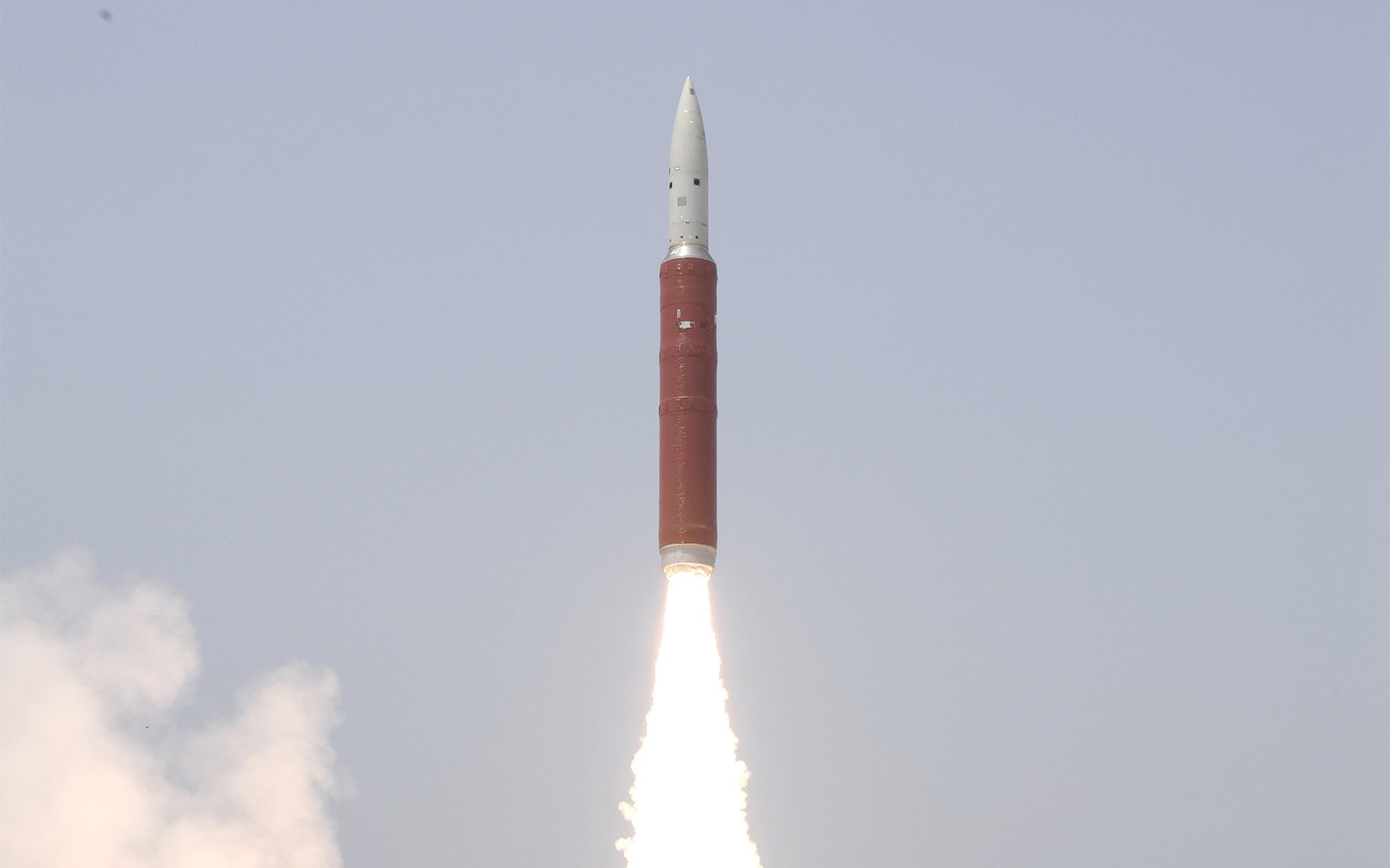The US has entered a new ‘Great Power’ contest with Russia and China that is seeing an even more extensive arms race. This involves cyber warfare, besides the conventional and nuclear weapons realm.
Taiwan Prepares Its F-16 Pilots For Emergency Drills Amid Chinese Threat To Bomb Its Airfields
From the late 2000s, it reached another dimension – space. An overarching sphere that now encompasses even cyber, nuclear, and conventional domains, its dynamics and nuances are far trickier and destabilizing.
Conventional war uses space-based assets to monitor adversaries, guide missiles, jets, and communications. Even something as simple as a Global Positioning System (GPS) for both military and civilian purposes is beamed from satellites.
Nuclear war, on the other hand, uses the same satellites to enemy monitor missiles, track their launches, alert countries of an attack, and guide missiles.
Emerging Threats To Satellites
Cyberwarfare also has a direct bearing on space since nearly all internet and communication passes through satellites. Thus, if a country attacks the cyber networks of its adversary, it would affect its satellites because networks are linked to space assets.
Conversely, if the country attacks the adversary’s satellites, it would affect its computer systems as well.
F/A-18 Super Hornets Finally On Cusp Of Beating F-35 Stealth Fighter Jets For Lucrative RCAF Contract?

Additionally, simple weapons like missiles that are used to knock down jets and other incoming nuclear missiles can themselves (along with their radars) be repurposed to knock out enemy satellites.
India’s March 27, 2019, Anti-Satellite (ASAT) test used a Ballistic Missile Defence (BMD) interceptor to take out its own satellite, a prime example of the overlap between BMD systems and space war.
That India’s ASAT effort itself was a remote result of the US’ abrogation of the 1975 Anti-Ballistic Missile (ABM) in December 2001 is a different story. It triggered an arms race because of the acceleration it triggered in Russian, Chinese, and eventually Indian missile programs.
DECODED: Why Dassault (Rafale) Aviation Surrendered A Multi-Billion Dollar Deal To US Fighter Jets Even Before Evaluation
The US’ Latest Move
Given how deeply enmeshed space is in all other forms of weapons and civilian life, the US military’s push to declassify a hitherto super-secret weapon to wreak havoc on enemy satellites and deter Russia and China, warrants debate.
Speculation ranges from it being a land-based mobile laser to blind enemy satellites; radio-frequency jammers on satellites themselves to target enemy space assets, or; high-powered microwave systems to throw other satellites’ electronics into disarray.
Experts, however, rate the possibility of it being a direct ascent system, where a missile launched from earth hits a satellite in space, very low.

The last such test the US conducted was the Operation Burnt Frost satellite shoot-down on February 20, 2008, in which a standard missile (SM-3) launched from a US Navy Aegis destroyer knocked out a USA-193 reconnaissance satellite.
Something that had triggered massive outrage and space-safety/debris alarms, the US had justified having to lose the decaying satellite which was allegedly leaking the highly toxic hydrazine fuel on board.
This also proved that a highly advanced surface-to-air BMD system had limited ASAT capabilities. With Defense Secretary Llyod Austin’s July 7 unclassified formal memo pledging to avoid space debris, a direct-ascent kinetic kill weapon like this remains highly unlikely.
Is It A Laser Weapon?
One possibility might be a ground-based, mobile laser weapon designed to blind or disable, enemy satellites in Low Earth Orbit (LEO). Altitude below 2,000 kilometers from sea level falls in this category.
In 2002, the Bush administration announced the Counter Surveillance Reconnaissance System (CSRS or ‘Scissors’), which was abruptly canceled in 2004. While the Pentagon never officially disclosed what the device was, experts believed it was a laser one to blind satellite optical systems.
Super Sukhoi: Why Indian Air Force Could ‘Dump’ Additional Batch Of Rafale Jets For Next-Gen Su-30 Fighters
Another guess is an on-board RF jammer – either carried by US satellites themselves or maneuverable “bodyguard” satellites that move to protect vulnerable space assets.
The Air Force Research Laboratory (AFRL) in 2003 and 2005 launched maneuvering satellites XSS-10 and XXS-11 respectively.
In 2014, the USAF tested a similar satellite called the Automated Navigation and Guidance Experiment for Local Space (ANGELS) for Space Situational Awareness (SSA).

In 2019, AFRL also tested the EAGLE system, in which one of three small satellites conducted an SSA, surveying the nearby space environment. The US also employs the Geosynchronous Space Situational Awareness Program (GSSAP), an SSA constellation stationed in Geosynchronous Earth Orbit (GEO).
Most of the world’s communications satellites, including US military’s, are in GEO.
The Pentagon says it keeps a watch on space debris and other enemy satellites. Experts are nearly sure of GSSAP to also be carrying some kind of onboard RF jammer or low-powered laser.
While lasers can burn through a satellite’s solar panels, there are technical impediments to its effectiveness. Even a scaled-down offensive laser system uses a lot of power, which on any satellite is limited.
Meet One Of World’s ‘Weakest Air Forces’ That Boasts Rafale, Typhoon, F-15EX Jets & Now Eying F-35 Stealth Fighters
Lastly, DoD has long been interested in high-power microwave weapons, which was reflected in a 1996 study called ‘An Operational Analysis for Air Force 2025: An Application of Value-Focused Thinking to Future Air and Space Capabilities’.
This envisaged microsatellites carrying a miniature microwave weapon for blasting satellites or ballistic missiles mid-flight.
- Parth Satam is a Mumbai-based journalist who has been covering India’s defense sector for more than a decade. He maintains a keen interest in defense, aerospace and foreign affairs and can be reached at satamp@gmail.com
- Follow EurAsian Times on Google News





